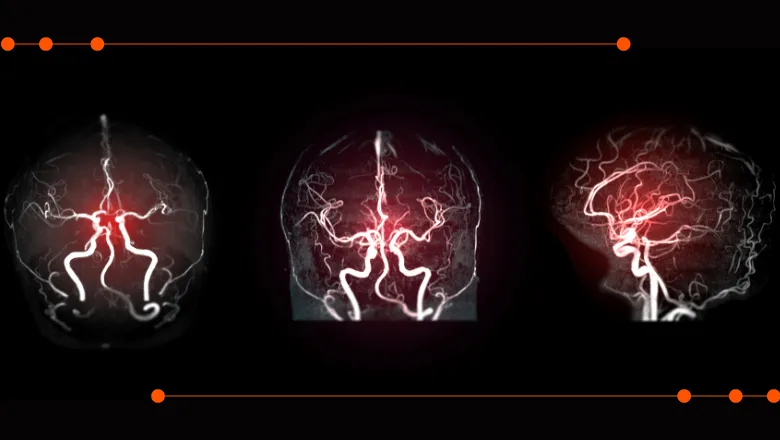Moving forward we can use these new techniques to create models which may be able to navigate unseen patient blood vessels, moving us closer to realising the full benefits of robotic MT with autonomous assistance.
Harry Robertshaw, PhD Student.
17 June 2024
Robotics and AI combination has potential to improve safety in emergency stroke surgeries
A new paper by King’s researchers highlights how the use of robots to treat stroke patients autonomously could widen access to time-sensitive emergency procedures.

Cardiovascular diseases are the most common cause of death across Europe, and account for more that 4 million deaths each year. Researchers are exploring how surgical robots guided autonomously by artificial intelligence (AI) could be used to enhance surgery safety and reduce procedure times.
Surgical procedures known as mechanical thrombectomies (MT) have become an established treatment for patients suffering from the blocking of large blood vessels, with rapid intervention increasing the likelihood that a patient will be able to care for themselves independently after a stroke.
The times between the first onset of stroke symptoms until treatment is crucial, as the benefits of MT become more marked the sooner a blood clot is removed.
The initial stage of the MT procedure involves navigating catheters and wires from the groin into the neck vessels, with researchers using computer modelling to show that this step has the potential to be undertaken autonomously using AI navigation.
Describing the analysis undertaken by the research team and the potential of inverse reinforcement learning (IRL) to train new AI models, King’s PhD student Harry Robertshaw said:
"Our research uses AI to show, for the first time, how to autonomously navigate medical instruments from the groin to the neck in blood vessels. This is an important part of MT, which removes clots from blood vessels. We also explored various methods to teach the AI.
"We found that using real-life examples to guide the AI, a technique known as 'inverse reinforcement learning', improves its performance compared to the best current methods.”
Our work is another step forwards towards improved procedural accessibility and precision of autonomous endovascular navigation tasks. For mechanical thrombectomy, the work plausibly lays the foundation for potentially transformative patient care - for example by treating patients more safely by using AI assistive navigation technologies.
Dr Thomas Booth, Reader in Neuroimaging, School of Biomedical Engineering & Imaging Sciences.


